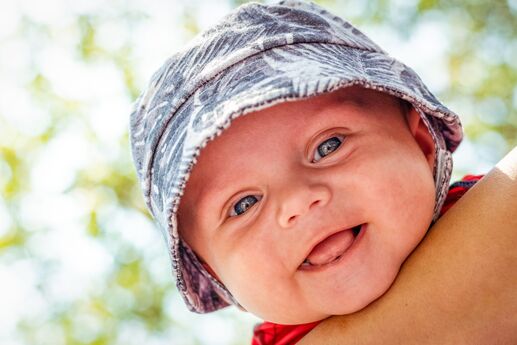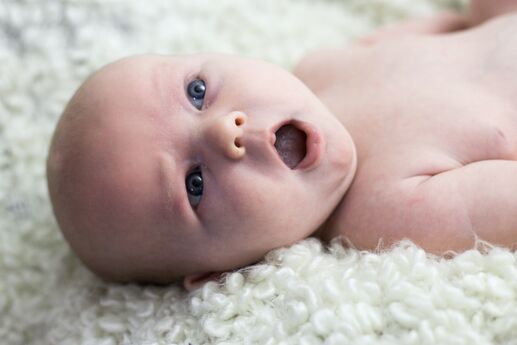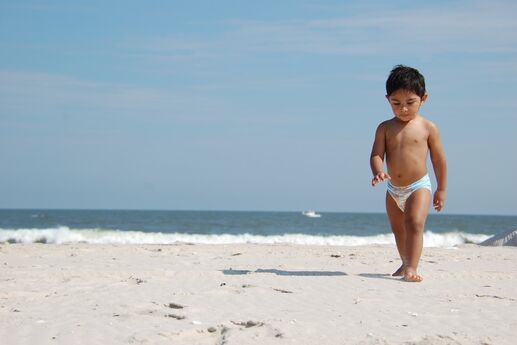Baby Milestone: The First Smile
My 1-month-old son had a belly full of breast milk, and his eyes shut tight in slumber the first time that I saw his little baby smile. Did that mean he was having pleasant dreams? That he was happy? That he was passing some sort of baby milestone? Or, as the naysayers like to tell us, did it just mean he was passing gas? According to the experts, those sleepy-time smiles during a new baby’s first month are really just reflexes. In fact, no one is sure why newborns smile so much in their sleep during their first month. However, I like to think of those early smiles as practice for the real deal. Here’s what I learned from my little one’s grins:
Your infant’s smile may develop. Your new one’s baby smile will soon become more pronounced: In terms of your baby’s development, genuine grins may start to brighten an infant’s face around the second month. That means that he’s alert and beaming in response to stimuli like your smiling face or a fun toy. These smiles indicate that your baby is reaching a big baby milestone: He’s developing social skills.
There are many types of smiles. The baby smiles that I most cherish are the ones my son would make when he spotted his dad or me. There was the “Hey, I’m glad you’re here to get me out of this crib” smile. And the “I love playing peek-a-boo with you” smile. And of course, the “Mommy or Daddy are so silly” smile. You may see these types of grins -- the ones where your new baby smiles at familiar faces and engages in play -- around the third month. Soon after, that smile may be accompanied by laughter, another big baby milestone.
Keep a camera handy. Capturing this happy baby milestone on video or with a camera isn’t all that challenging. Most new babies seem to find lots of things to smile about during these early months. Of course, babies can also get over stimulated. This is why you sometimes end up with tears when you try too hard to coax a smile. I found it was helpful to lighten up on the baby games until my son was ready for more grins and giggles.
There’s nothing more endearing than when your child hits one of those baby milestones, and it’s especially spectacular when it’s a baby smile. You’ll probably find that your little one’s grin can light up a whole room. Keep the games, snuggles, and kisses coming, and those sweet smiles are sure to brighten everyone’s days.
Photo by Fredrik Ivansson on Unsplash







